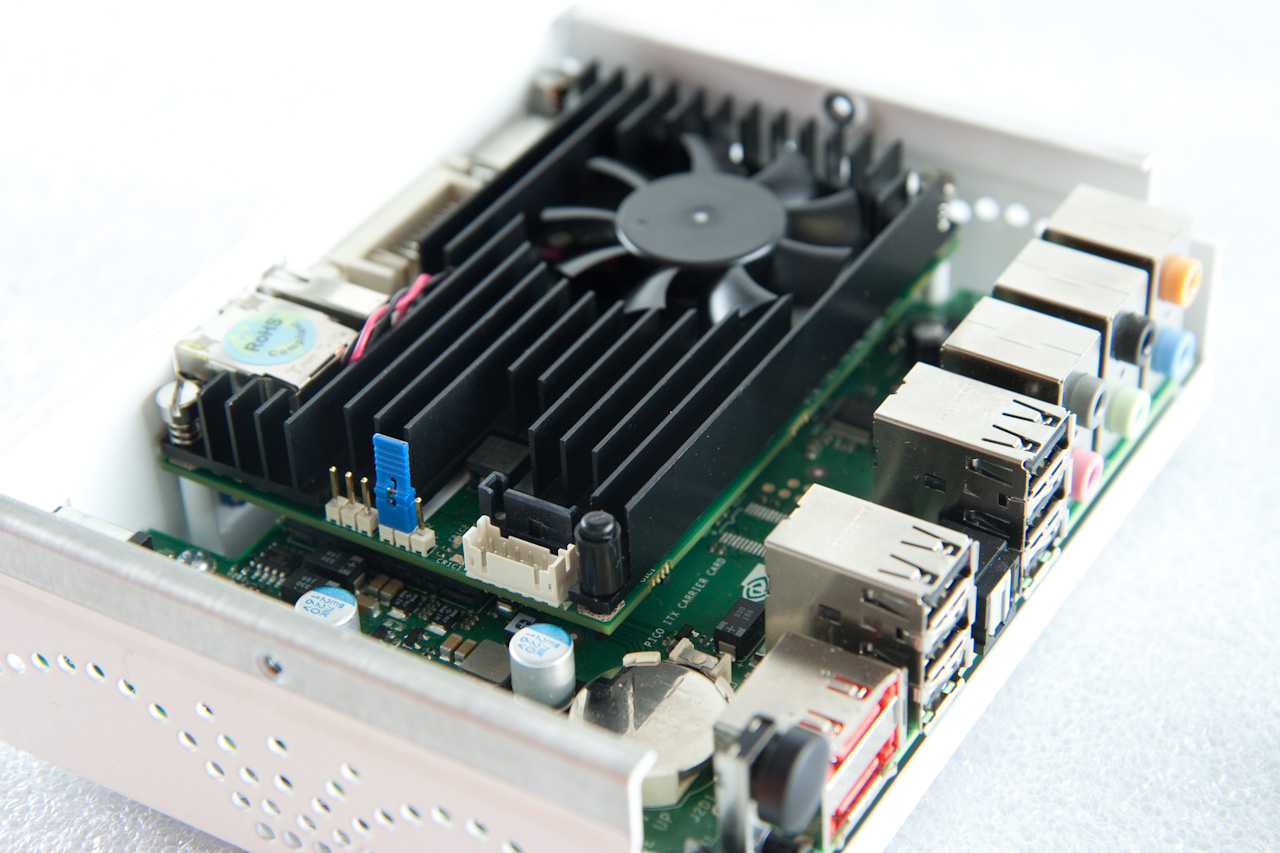Nvidia's Ion: Lending Atom Some Wings
Introduction
Nvidia’s GeForce 9400 launch garnered the company a lot of publicity. After all, the chipset provided exactly what the market had been waiting for:
- It’s compatible with Intel processors; with all due respect to AMD fans, up until Phenom II launched, these offered the best performance and lowest power consumption.
- It’s built around modern graphics circuitry that’s as powerful as an entry-level GeForce add-in, and can decode HD video.
- It does all of this with relatively low power consumption and a small footprint.
The GeForce 9400, and its mobile version, the 9400M, offer a lot more than Intel’s mobile chipsets. That’s particularly true in the area of graphics performance, be it for entry-level desktop PCs, multi-use computers, “home cinema” boxes, or laptops/notebooks. Apple, by the way, made its position clear, going so far as to totally abandon Intel’s integrated chipsets in its MacBook line of notebooks.
But beyond standard desktops and notebooks, Nvidia is aiming at the netbook and nettop market—a lucrative one in tight economic times like these. To go after that market, Nvidia developed its Ion platform. Unveiled a few weeks ago, the Ion reference platform consists of a case containing a pico-ITX motherboard with an Nvidia 9400M chipset and the de rigueur Intel Atom processor.
Does Atom + 9400M add up to the best compromise between sufficient performance, flexibility, and lower energy consumption? Is the classic Intel platform really outmoded? To find out, we tested the very first Ion platform we could get our hands on, and compared it to the first Intel Atom board: the D945GCLF.
Get Tom's Hardware's best news and in-depth reviews, straight to your inbox.
-
rootheday Let's be clear - the Ion reference platform is for a nettop - not a netbook. Its based on the dual core Atom 330. I doubt very much that Ion with a single code Atom 230 or N270 would have enough horsepower to do the BD decryption required for BD playback.Reply -
matthieu lamelot Please, let me be clear : the platform reviewed was equipped with an Atom 230, not a 330, as is perfectly obvious from the pictures (one single die on the CPU package).Reply
And, yes, it's powerful enough (thanks to the 9400M) to smoothly playback a BD like Casino Royale (including the HDCP decryption). CPU utilization rose to around 67 % during that test.
And even though the Ion ref platform is kind of a nettop (and we tested it with that in mind, comparing it to Intel's nettop platform), it could also fit in a netbook since 9400M TDP is very close to that of Intel 945GSE chipset that is found in most netbooks today : 12 W compared to 9,3 W. Nvidia and its partners would just need to drop 9400M's frequency a bit. -
randomizer Matthieu, I'm not sure who makes the onboard sound, but if it's Realtek you need to have Stereo Mix enabled for CoD 4 to run. Also, I found that I couldn't start CoD4 (with what appears to be the same error even though I can't really understand it) without plugging in speakers. Yes, speakers. Although any output device might have sufficed.Reply -
mitch074 Realtek codecs are quite common (thus I concur with randomizer); some are quite advanced in that they do automatic detection of what kind of hardware is connected to what pin (through best guess from device impedance, considering the low dB noise those codecs output they are some precise piece of ingineering), allowing autodetection of the sound setup (they will detect if you replace a microphone with a set of speakers, and switch configuration from stereo+microphone to 4.0 audio, for example; that requires driver support though).Reply
If CoD4 requires sound (some games are funny this way) and no hardware is plugged in, then the sound card may report a status CoD4 wasn't expecting, and refuse to run. -
randomizer Well you'd think that they would have patched the game so that it doesn't have problems with needing Stereo Mix and output devices by now. What if my speakers are dead? That's just poor...Reply -
amnotanoobie I immediately looked at the benchmark images, instead of reading the accompanying text around it, and I thought "WTH is AMD (green bar) doing on the nVidia ION platform." I thought I was linked to another page of another review.Reply -
hei man pls ...for now nvidia platform has some advantages but with DX11 you will not need gpu any more ...so for now it's ok for future this platform will be nothing but dustReply
-
nukemaster You may not need a GPU, but a GPU is still far faster then the cpu at running games.Reply
Good review its about time Atom got a little help. -
liemfukliang I wont buy atom until it can run PCMark Vantage, 3DMark Vantage. I don't mean it has to be high score, I just one it is finish the test and not error. :)Reply -
Tekkamanraiden I'd like to be able to buy one of those little reference systems. It would make a nice little HTPC.Reply
